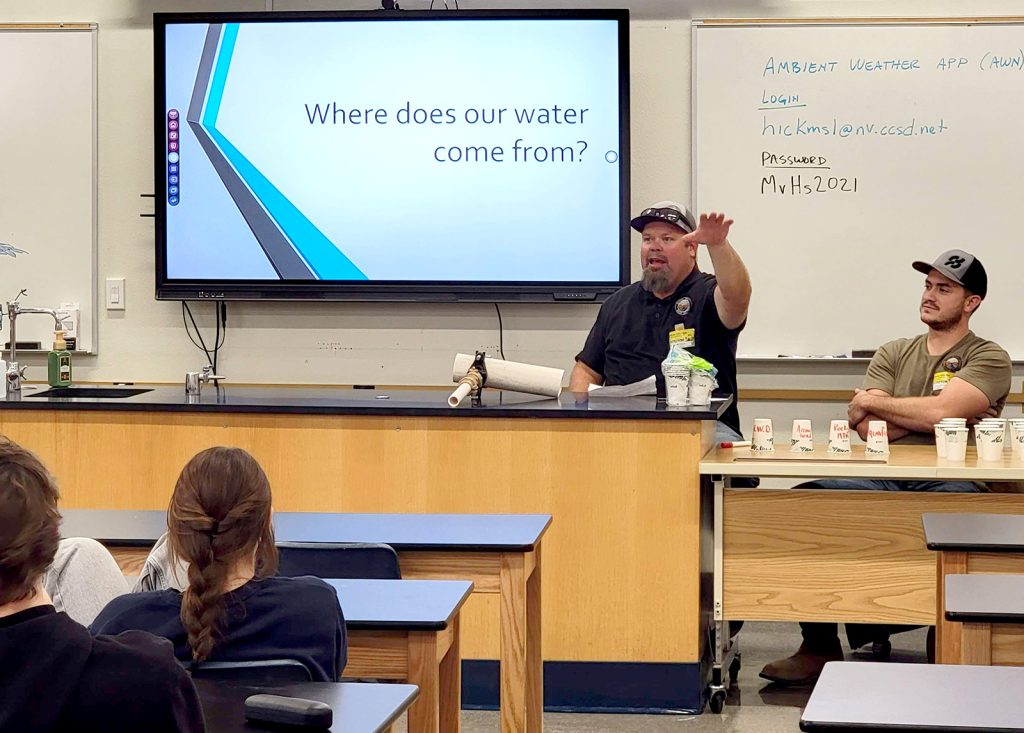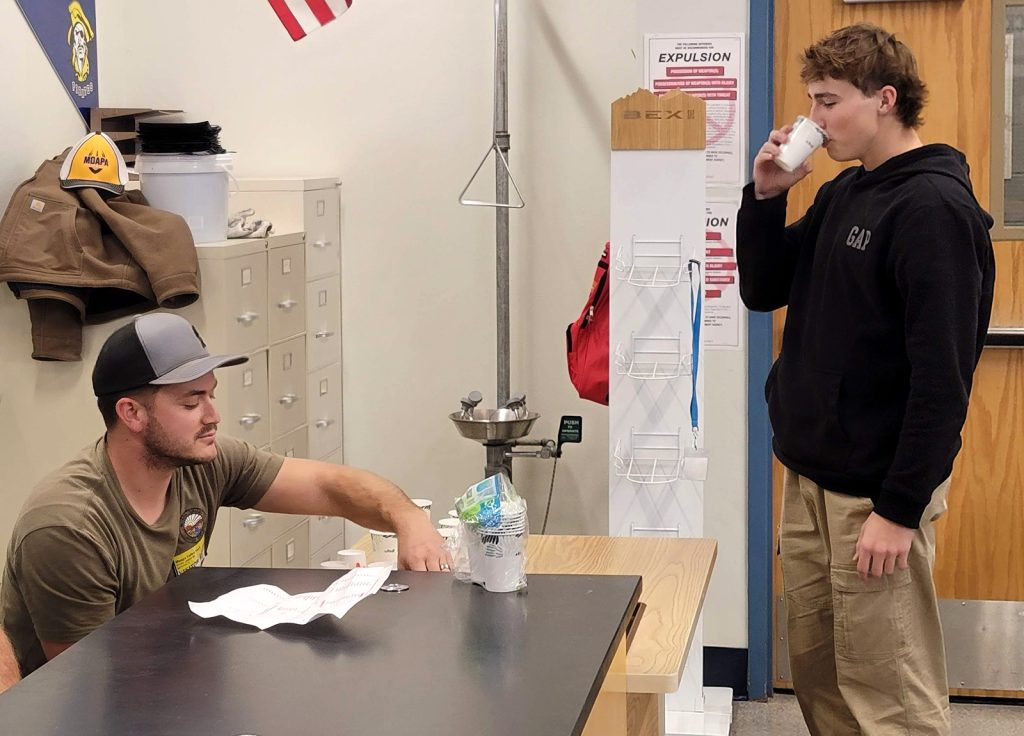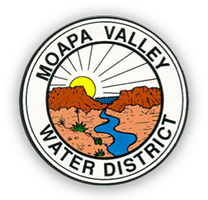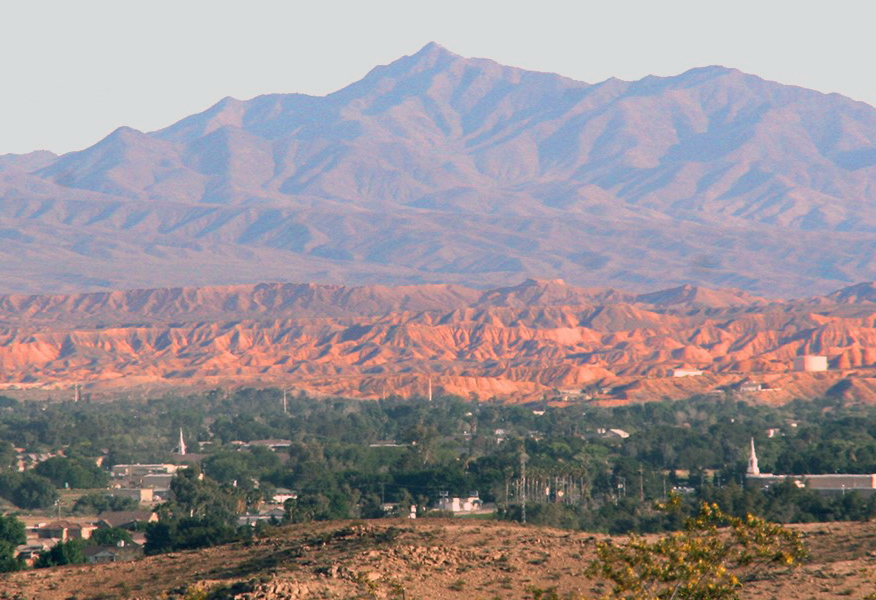
MVHS kids learn about local water source
A group of science students at Moapa Valley High School got a crash course in local water resources when members of the Moapa Valley Water District staff visited the school on Tuesday, January 21.
MVWD crew members Mica Leatham and Ryan McNinch gave presentations throughout the day in the science classes of MVHS teacher Shane Hickman. The instruction on the local water system went along with a series of units that Hickman has been teaching on Earth science and the use of natural resources.
“In my opinion, a presentation about our own Valley’s water resources is pivotal information my students need to know,” Hickman said in an interview. “The historical aspects alone of our valley’s water source is critical in securing and maintaining it for the future.”
During the presentation, Leatham told the students that his whole job is making sure that clean, safe water continues flowing to the homes and businesses of the community. The job includes keeping a complex water works system in operation and in good repair, he said.
That system includes about 3,200 meter connections and 500 fire hydrants spread out over 200 miles of pipeline, he added.
Leatham asked the students if they knew where the water comes from that flows through their taps at home. There were a variety of answers, but one student responded with the buzzword: “aquifer.”
“That’s the best answer we have had all day,” Leatham said. “Can you explain what an aquifer is?”
“It is like a deep underground pond,” the student responded.
“You got it!” Leatham said.
Leatham explained that Moapa Valley is fortunate to have its own local source of water coming from an aquifer at a point near the Warm Springs area. He talked about the district’s well site at Arrow Canyon with two production wells: Arrow Canyon #1 which produces around 3,000 gallons per minute (gpm) and Arrow Canyon #2 producing about 1,200 gpm.
“The two wells are only about 100 feet apart from each other, yet there is a big difference in what they can pump,” Leatham said. “That shows just how complex an aquifer can be.”
He also talked about the district’s Baldwin Springs facility in the Warm Springs area. Here the crystal clear water just bubbles up from the ground into a large basin at a rate of about 1,200 gpm. Only a little treatment is needed before it is sent straight to the homes of the community, Leatham said.
At the end of the presentation, student volunteers were invited to come to the front of the class to participate in a water taste test. Each student tasted four different cups of water which included three different bottled water brands and one cup of MVWD tap water. The students were tasked with trying to guess which was which. Most of the tasters could not tell which water came from the tap.
“Most bottled water brands just use water straight out of the tap somewhere,” Leatham said. “Some of them run it through reverse osmosis filters; but that takes a lot of the mineral content out which your body needs when you’re thirsty.”
“I work with water all day long: I manage how it is produced, how it is treated, and how it runs through the pipes to our homes,” Leatham said in concluding his presentation. “And I prefer to drink water straight from the tap. I have no problem recommending that to people.”
Hickman expressed appreciation for the MVWD staffers spending time with his students. “They did an outstanding job delivering the information in a way that is interactive and meaningful for each of my students,” he said.


